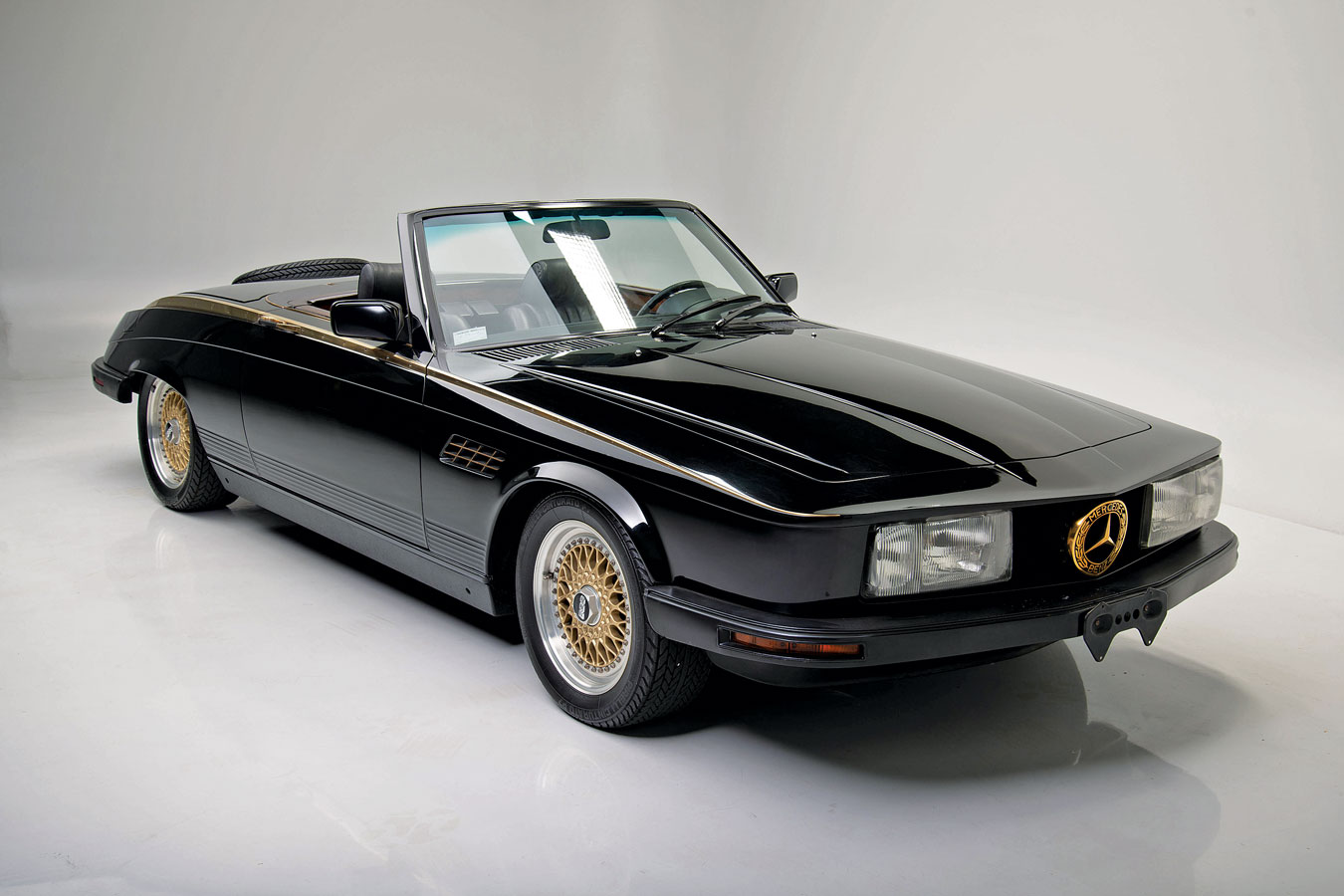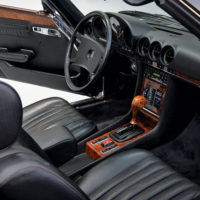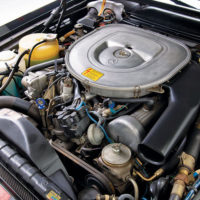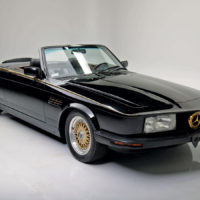SCM Analysis
Detailing
| Vehicle: | 1981 Mercedes-Benz 380SL Custom |
| Years Produced: | 1980–85 (U.S. from 1981) |
| Number Produced: | 53,200 (all markets) |
| SCM Valuation: | $10,000 |
| Tune Up Cost: | $800 |
| Chassis Number Location: | Radiator core support |
| Engine Number Location: | Bellhousing behind left cylinder head |
| Club Info: | Mercedes-Benz Club of America |
| Website: | http://www.mbca.org |
| Alternatives: | 1980–82 Ferrari Mondial 8, 1978–82 Chevrolet Corvette, 1983–89 Alfa Romeo Spider |
| Investment Grade: | D |
This car, Lot 703, sold for $84,700, including buyer’s premium, at Barrett-Jackson’s Las Vegas, NV, sale on June 19, 2021.
This heavily modified 380SL belonged to Mr. Las Vegas himself, the one, the only, Wayne Newton. But that’s not why we’re here.
I have never listened to Wayne Newton, I have never heard of Niko-Michael Coachworks, and heck, I have never even been to Vegas because I don’t gamble. To my eyes, this is just a super-low-mileage 380SL that ended up becoming the whimsical toy of a patron with altogether too much money.
Celebrity markup
If you’re sitting on a bone-stock 1981 380SL with almost no miles on the clock, don’t get any ideas. This sale will not jump-start the $80k 380SL market. I assume the high bidders believed the celebrity factor counts for a large portion of the value here. Regardless, this does not seem like a great way to spend eighty grand.
Much like a cloistered monk would have a hard time understanding the reasons people overpay for Bitcoin, I have no idea what drives the market for this sort of Las Vegas memorabilia. But a simple explanation makes sense: At least two people liked the car, or the concept at least, and decided they had to have it.
Not that I blame them. I refuse to say this custom looks better than a stock R107 (yes, even a U.S. version; I must stick with my party line) but if Mercedes had built a car like this in the 1980s, I imagine every cocaine smuggler in Miami would have been driving one.
The least-expensive SL
Back in the real world, the 380SL is the least-expensive path to R107 ownership. A great example should be $15k or less, and you can rack up the miles on them. Check the timing chain every 30,000 miles or so, replace the cam oiler-tube kits when the valve covers come off, change the oil often, and you will have a car for life.
The 380 may not be fast (it was still a much better performer than any domestic car from this era) but once the single-row timing-chain issues were dealt with, it was a solid analog car. Want proof? Of all the gasoline-fueled Mercedes built, there are more R107s on the road today than any other model.
If you do consider acquiring a 380, know that all the cars built after August 1983 had duplex chains. This doesn’t mean they don’t stretch or jump, but if you are looking at an ultra-low-mileage example, the single-row chain on earlier models gives you some negotiating power due to its bad reputation.
Other coachbuilt cars
Like it or not, a number of Mercedes were being modified in this era, especially in Europe. SGS, for example, built a gullwing-door 500SEC as early as 1982, while companies like Caruna offered a 4-door cabriolet. While the Europeans cut their fair share of corners to get as many cars as possible to Japan and the Middle East, a certain mystique covers the sheets of body filler that one might find on a Euro-market car.
The idea of an American coachbuilder altering a German car, however, is difficult to accept — much like eating blueberry waffles with duck confit. Still, the market for coachbuilt Mercedes from Germany is on the rise, with fascinating cars turning up in the Middle East and Japan, as well as Russia. While these cars were regarded as inferior for decades, they are now slowly becoming part of Mercedes-Benz history.
One of a kind
The main thing about our subject car that I can appreciate is that I’ve never seen anything quite like it before. And by that I mean I’ve never seen a car that looked anything like this, let alone a Mercedes. Somehow it manages to evade the silliness of an Excalibur or a Clenet, while still being a neo-classic through and through. It is unique.
Niko-Michael Coachworks of Port Washington, NY, created customs for quite a few celebrities in the era but has been defunct since the early 1990s. Even though I do not know much of anything about this firm, I can imagine that the proposition went something like this: “Hey, Wayne, go get me a new SL from the nearest Mercedes dealer and watch what I can do!”
Realistically, this car took thousands of hours to create, and perhaps that story is worth the price paid. This doesn’t mean I would want to own one, but I can see how it might have appealed to its new owner. Whether it resonates with anyone else doesn’t really matter. ♦
(Introductory description courtesy of Barrett-Jackson.)



